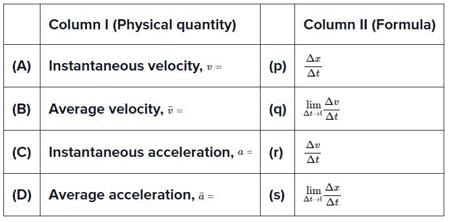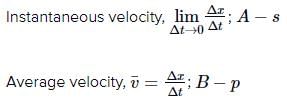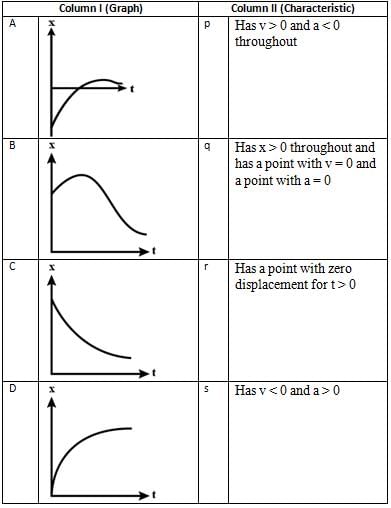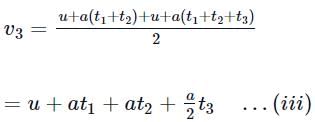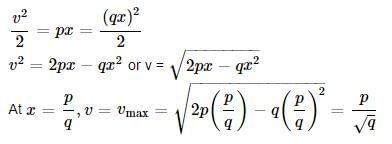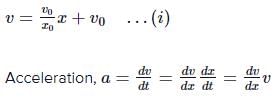Test: Acceleration (NCERT) - NEET MCQ
15 Questions MCQ Test - Test: Acceleration (NCERT)
The displacement of a body is given to be proportional to the cube of time elapsed. The magnitude of the acceleration of the body is
The slope of the tangent drawn on velocity-time graph at any instant of time is equal to the instantaneous
Which of the following statements is not correct regarding the motion of a particle in a straight line?
A particle moving along a straight line has a velocity v m s−1, when it cleared a distance of x m. These two are connected by the relation  When its velocity is 1 m s−1, its acceleration is
When its velocity is 1 m s−1, its acceleration is
A particle moves rectilinearly. its displacement x at time t is given by x2 = t2 + 1. Its acceleration at time t is proportional to
A car starts from rest, attains a velocity of 36 km h−1 with an acceleration of 0.2 m s−2, travels 9 km with this uniform velocity and then comes to halt with a uniform deceleration of 0.1 m s−2. The total time of travel of the car is
A particle moving with uniform acceleration has average velocities v1, v2 and v3 over the successive intervals of time t1, t2 and t3 respectively. The value of  will be
will be
A particle starts from point A moves along a straight line path with an acceleration given by a = p − qx, where p,q are constants and x is distance from point A. The particle stops at point B. The maximum velocity of the particle is
For the one dimensional motion, described by x = t - sint
Position-time graph for motion with zero acceleration is
The velocity-displacement graph of a particle is as shown in the figure. Which of the following graphs correctly represents the variation of acceleration with displacement?
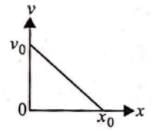
The velocity-time graph of a particle in one-dimensional motion is shown in Fig.
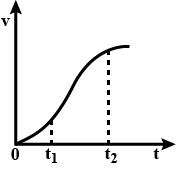
Which of the following formula are correct for describing the motion of the particle over the time-interval t1 to t2.


